Remember that old adage: "How do you eat an elephant? One bite at a time..". Let's apply that to your organizing journey. For the next few weeks we are going to tackle tasks to help you get a handle on your home and office space one area at a time. This week we are going to tackle one of the small jobs in your home that is probably one that everyone uses and gets cluttered all the time: the junk drawer. Why the junk drawer? Simple: everyone has one, and it's such a great fulfillment when it's done! Small victories give us satisfaction and impetus to move on to bigger areas. Plus, it's a small task with great rewards! You feel so great when it's done!
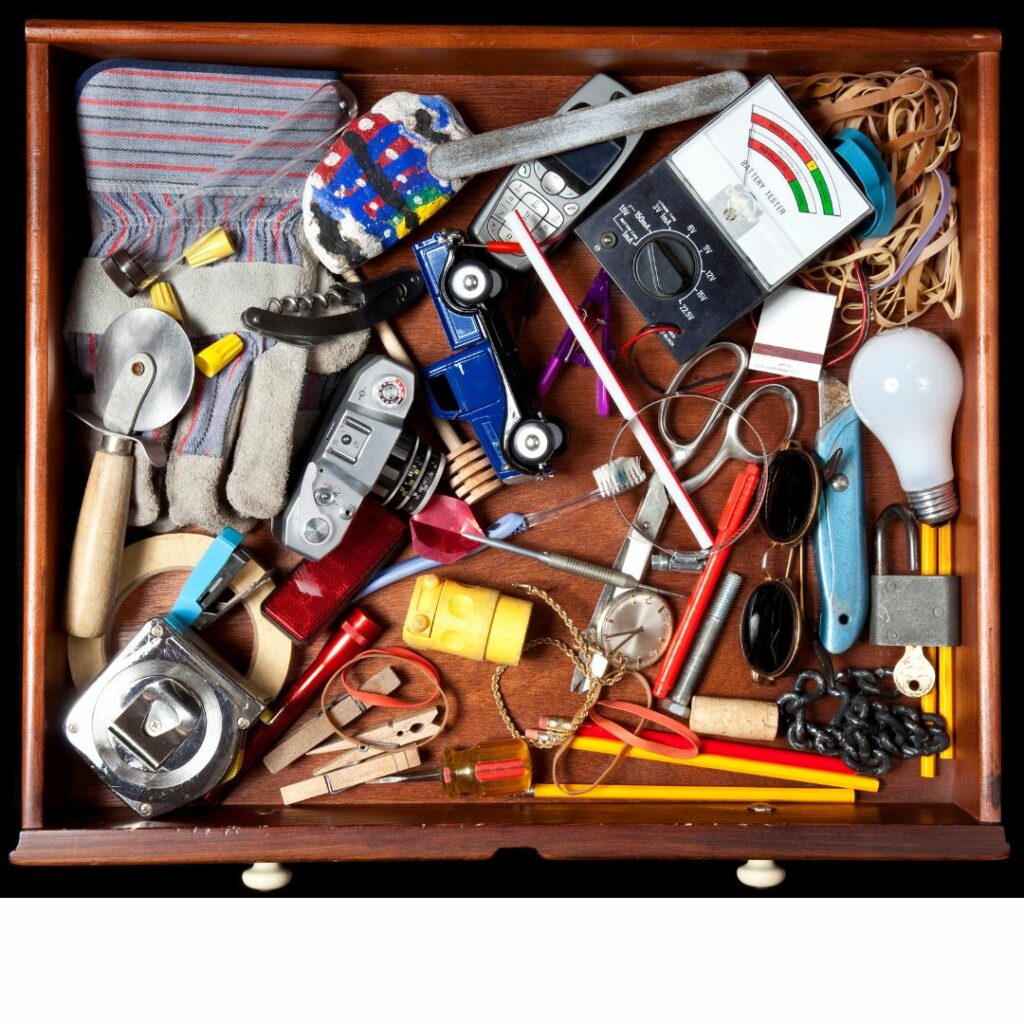
Inevitably when I visit a client for the first time they show me areas in their homes that need my help and they always show me their junk drawer. Here's a few facts I can tell you about your junk drawer: first, everyone has one. . Second, it’s probably in your kitchen, maybe right next to the silverware drawer. And, third, it’s full-to-bursting. Here’s something else I can tell you – cleaning up and organizing a junk drawer takes a relatively short amount of time. Junk drawers are the physical manifestations of what I call “I-might-need-that-one-day clutter”. They’re filled with extra parts from the project you assembled and the extra 10 batteries you had to buy because the 12-pack was much better value than just buying the two you actually needed, toothpicks, rubber bands, half-a-dozen pens that may or may not work...There’ll be toothpicks, buttons, rubber bands, and something that was definitely going to be used on your daughter’s school art project. And the truth is you actually might need each of these things one day, so there’s nothing wrong with keeping that stuff. But, if something becomes impossible to find, then in theory it's not something you can use. A little organization will make a big difference – and I’m here to help.it’s cleaned up, it will give you a great feeling of accomplishment so let’s do it!
First step: Change how you look at it.

Try this thought: "We no longer have a junk drawer. We have a utility drawer. This thought shift will really help you understand how you want to utilize that space. Things that will go in that drawer will really belong there: i.e. things that you need to use. This changes the function from clutter that you don't really need to things that you DO need, and frequently need to get hold of. Calling it a utility drawer will help keep the clutter down and help you think twice about using it as a catch all.
Next Step: Clear the counter and take everything out of the drawer. Everything. On the counter. Throw away the trash. How many rubber bands do you actually need at one time? If you use a lot, consider isolating a space in the drawer with a small container of them. Try every pen that you find. Dead ones? Invite them to leave. Old batteries? Toss em. Dried up tubes of super glue? Nope. Instruction manuals for kitchen appliances? Really? Do you need an instruction manual for your toaster? Old post it notes with notes on them that you can't remember what they mean? You get the idea....
Categorize what's left. Sort the remaining items into groups and piles. NOW you know what you need to contain and organize. Once the Trash is gone, start sorting out what’s left into like categories – office materials, small tools, screws, batteries for example. You’ll quickly realize that your junk drawer has been holding pieces to things that actually belong somewhere else in your home. Now’s the time to pack them up and reunite them with their long-lost friends
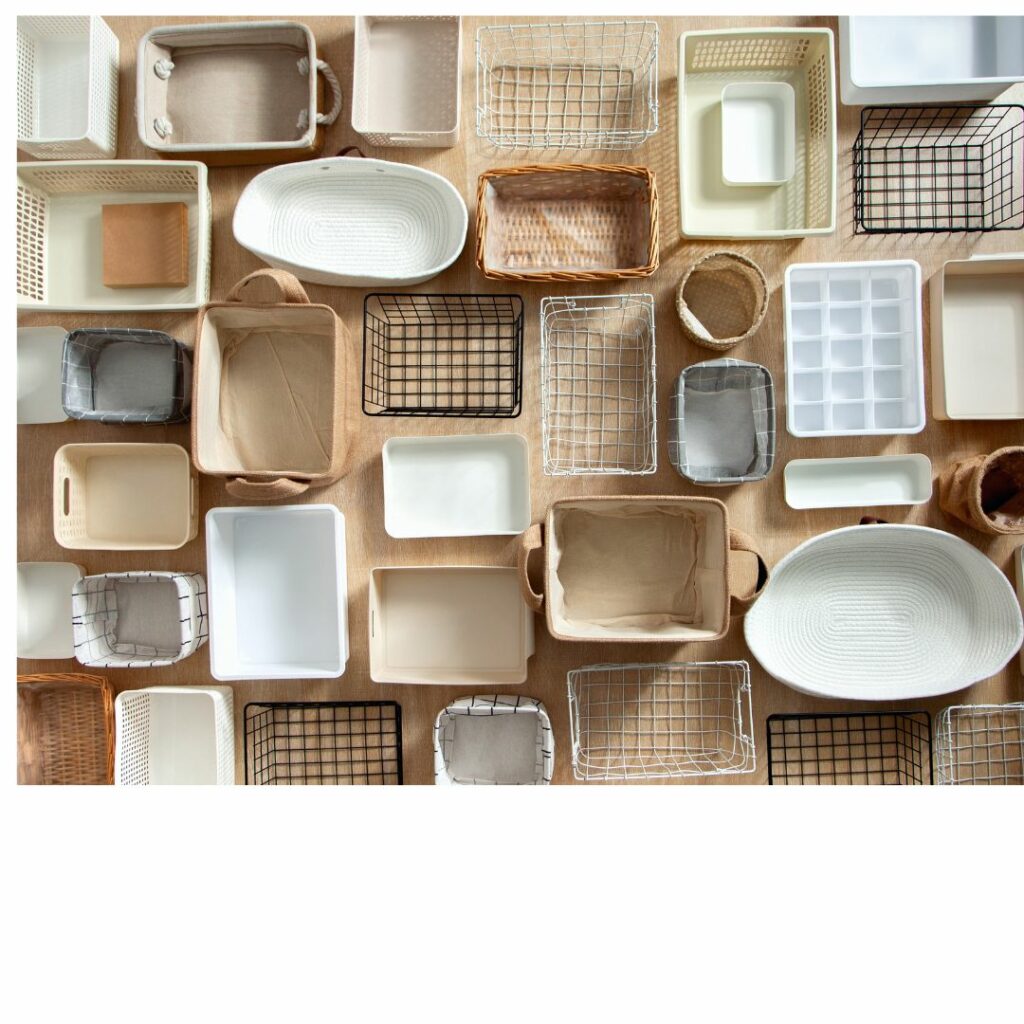
Everything in its place: Storage solutions. Absolutely you can purchase little drawer organizers and storage bins everywhere: Target, Home Depot, etc. I also am big on using some things you already have: extra plastic containers, small boxes (who cares what they look like if they work, it's a drawer, no one will see them), etc. The idea is to keep like items together once and for all. I have even used different sized baggies that are labeled--it doesn't;t have to interest ready, just functional. Whichever way you choose to do it, you want to start keeping like items together and separating them from others to create easy-access points. If you know that batteries are always on the left side and locks and keys are always on the right, you’ll easily be able to put your hands on exactly what it is you need at the moment you need it. Don't forget to take time to admire your handy work! Just look at all those separate sections with everything in its rightful place. Take joy in the fact that you have transformed your chaotic junk drawer into a really workable utility drawer, arming you for any unforeseen situation!
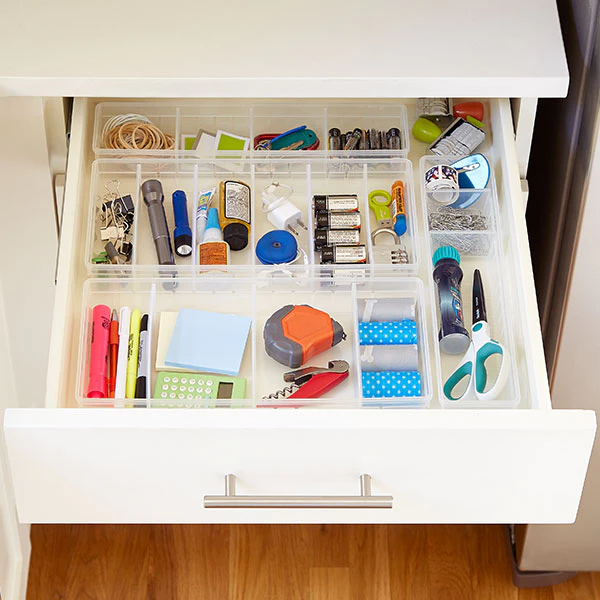
Finally: Keep it that way: Allow yourself the chance to learn to keep it that way! a 10 minute tidy up once a month (this could be done any time: during tv commercials, while waiting for your family to get their jackets on or find their shoes, you get it. I used to do mine while I was on hold on the phone. Once a month keeps your utility drawer from getting overwhelmingly jammed full. Remember: Neat and tidy is not the goal of organizing. Neat and tidy is the RESULT of organizing. the goal of organizing is retrieval.
As always, we're here to help with any organizing ideas and tasks. Remember, it's not about the stuff.
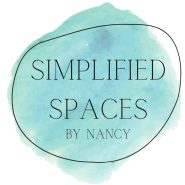

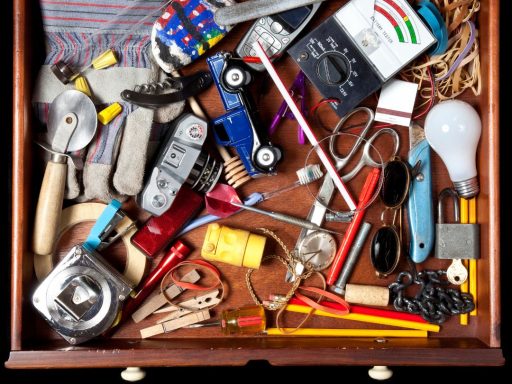

One Reply to “Let’s Get Organized: Starting Small: Junk Drawers”
I like “Utility Drawer”! Small boxes from jewelry gifts, mini Rubbermaid storage containers, Dollar Tree bins for pens/pencils. It doesn’t have to match or be Instagram worthy, it just needs to organized and user friendly. “A place for everything and everything in it’s place!”